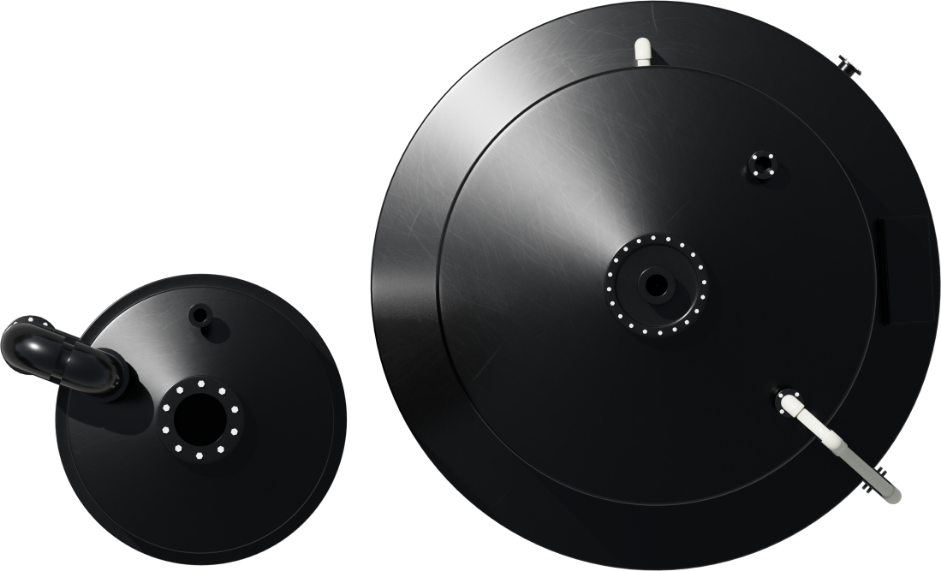The cost of a Niplast storage tank varies greatly depending on size, material, ancillaries, delivery type and many other factors. Contact us today to speak to an expert about your requirements or fill out our quick quote form.
Due to the bespoke nature of the business, we are unable to store products for viewing. All product images are available on our website, where you will also find individual product datasheets that contain all the necessary information.
If you require additional information regarding our products, please give us a call or email to speak to one of our technicians. Alternatively, we can send a product datasheet to help answer your query.
All Niplast bunds comply with HSE guidelines, operating at 110% of the tank capacity. The capacity of a bund made up of numerous tanks is determined by the largest tank. Our technicians are happy to assist when choosing your bund/tank and bund size.
Payment is accepted through bank transfer using the details provided on the invoice.
We are able to offer a variety of installation methods, depending on the complexity of the tank system and the end-user’s requirements, including: ex-works supply, delivery of tank, delivery and offload from wagon, and delivery, offload, position, and bolt-down. For more information, please see tank installation.
All Niplast tanks come with a 20-year design life. However, material quality, UV exposure, and upkeep can affect how long a plastic storage tank lasts. The longevity of the tank and the quality of the liquids held inside can both be increased with routine cleaning and inspections.
Plastic tanks are generally low-maintenance, but we recommend occasional inspections and cleaning to preserve liquid quality and prevent sediment buildup within the tank. Periodic checks for leaks and damage are also recommended to preserve the tank’s design life. We are able to provide in-service inspections to HSE guidance note PM86.
In general, plastic tanks are thought to be more environmentally friendly than more conventional materials like concrete or metal. Plastic tanks can be recycled after the product’s lifespan and also use less energy to manufacture and transport.
Yes, we offer dedicated containment bunds that have 110% Tank Capacity Bunding to HSE Guidelines. These secondary containment bunds contain any unintended escape of the material from those tanks. Bunds provide secondary containment for the liquids stored in the tanks or other items therein.
As well as storage, a reputable plastic tank manufacturer will be able to advise on vessels for other treatment stages including water break tanks, the mixing of slurries, and for dosing applications.
The maximum tank capacity offered by your tank supplier should reflect the physical constraints of their manufacturing plant – the tank supplier should self-impose a practical limit. Subject to this, Niplast tank capacity is available up to 100,000 litres.
Your tank manufacturer should be able to advise on the appropriate tank furniture for the application, including specific requirements of the proposed bulk chemical supplier. This will cover venting, overflow, frost protection and fume scrubbing.
Dedicated thermoplastic bunds are a secondary containment system around a storage tank. Bunds should be available with appropriate access to the tank and valves, and should be fitted with adequately sized anti-flotation lugs. It’s always better to bund than not to bund. Oil storage tanks must be bunded.
Polypropylene, high-density polyethylene and PVDF provide resistance to a spectrum of chemicals, but issues of compatibility and material choices do not stop with the tank body. Due consideration needs to be given to valve bodies, gaskets, nuts and bolts. Some inexperienced manufacturers overlook these areas.
Today, with over 40 years of brand heritage, Niplast is an expert in manufacturing plastic bulk storage tanks or industrial tanks to strict CEN standard BS EN 12573 and its forerunner DVS 2205.
Our long history of innovatively applying these standards to solve chemical storage problems sets us apart from other brands of underground water tanks and chemical storage solutions. Sometimes, you need to think outside of the tank!
Contact Us